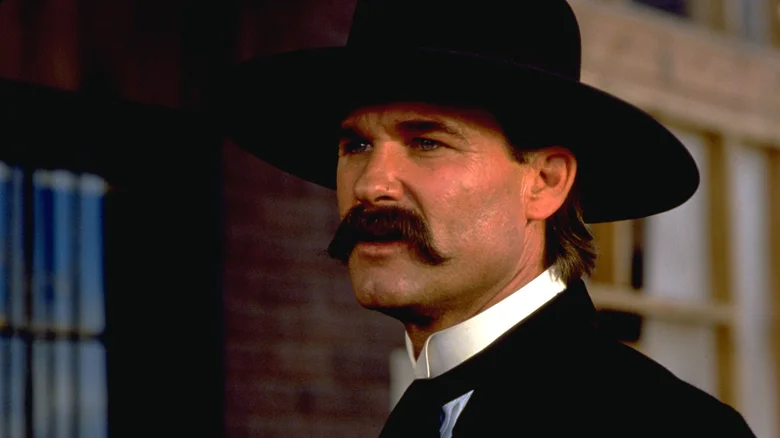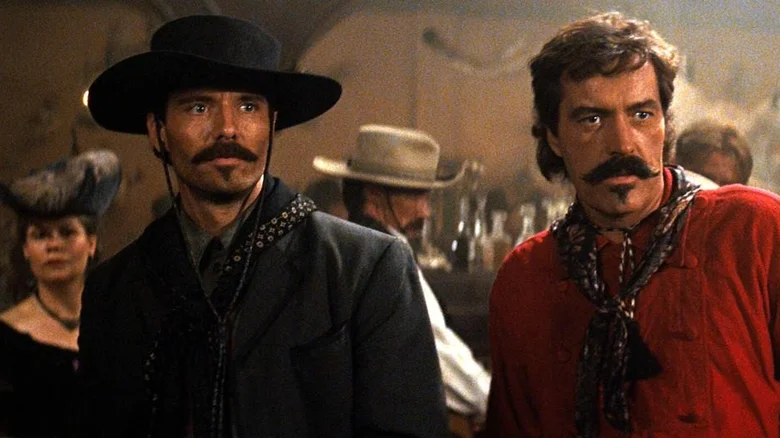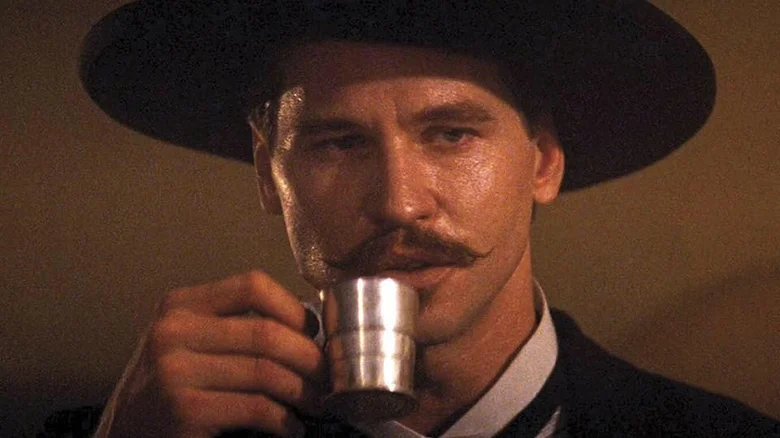The 1990s saw the rebirth of westerns. “Dances with Wolves” won Best Picture at the 63rd Academy Awards, as did “Unforgiven” at the 65th. The genre has never returned to the dominant ubiquity it had in Hollywood’s Golden Age. However, the 1990s put Westerns on the track to enjoy a healthy presence in 21st-century cinema. One of the most fondly remembered westerns of this decade is 1993’s “Tombstone.” It’s not as meditative as “Unforgiven,” or as politically concerned as “Dances With Wolves.” No, it’s just a good bloody shoot-em-up.
“Tombstone” retells the story of the Earp brothers and the gunfight at O.K. Corral. The story had been told on film before, such as in John Ford’s “My Darling Clementine,” and transcended into a silver screen myth. “Tombstone,” starring Kurt Russell as Wyatt Earp, was just the latest version of it. Screenwriter Kevin Jarre was originally set to direct the film in what would have been his debut. However, he was replaced by George P. Cosmatos and the effect of this replacement rippled through the production.
Home in time for Christmas

Just before the release of “Tombstone” on Christmas Day 1993 Entertainment Weekly published a behind the scenes look at the film’s tumultuous production. The film’s troubles came at the outset; Lawrence Kasdan’s “Wyatt Earp,” starring Kevin Costner, meant that “Tombstone” was crowded out of the market. It’s only once they got the script to Kurt Russell and secured his involvement that Jarre and his producers James Jacks and Sean Daniel went forward.
With Russell in the saddle, they managed to assemble the rest of the cast and secure $25 million in funding via Disney affiliate Cinergi Productions (headed by Andrew Vajna). However, the funding came with a stipulation; Disney wanted the movie ready in time for Christmas. That time crunch added to the pressure for Jarre. The mix of pressure and inexperience led to him being let go after a month of shooting.

Sam Elliott (who played Virgil Earp) said, “I knew from the third day Kevin couldn’t direct. He wasn’t getting the shots he needed.” Michael Rooker (the outlaw Sherman McMasters) was more sympathetic: “From the beginning they allotted too little time to do this movie. Kevin was trying to do it in the amount of time contracted for, which was way underestimated. No way in hell.”
Powers Boothe (the cowboy Curly Bill Brocius) said, “Kevin was incredibly crushed,” but also that the cast refused to let his firing kill the movie: “We had all turned down other project. So when it came down that they were pulling the plug, we all agreed, ‘Let’s do the damn movie'” Cosmatos stepped up as director with only a couple days’ preparation; he’d previously directed a script Jarre worked on, the obnoxiously titled “Rambo: First Blood Part II.” Not everyone was eager about his arrival, though.
Bleeding support

The Entertainment Weekly piece describes Cosmatos as a “demanding” director. While some stress might be understandable given the time crunch and limited prep he had, his behavior still saw 17 crew members quit or be let go. Reportedly, half the art department was gone by the end of the shoot. One of the holdouts was Catherine Hardwicke; nowadays she’s better known as a director (“Thirteen,” “Twilight”) but on “Tombstone” she was a production designer. Hardwick told EW that “[Cosmatos] got everybody charged up,” but she stayed on because she agreed with his decision to brighten the film’s color palette.
While cinematographer William Fraker wasn’t one of the lost 17, it wasn’t for lack of desire. Fraker apparently quit three times and had to be talked out of leaving by Jacks. The article describes an episode where Cosmatos and Fraker rammed two golf carts together and then erupted at each other. Similar to Hardwicke, one reason Fraker stuck this out was that he was satisfied with the work Cosmatos was doing: “If I wasn’t happy with what was on the screen, it would be entirely different. But I think we have a movie.”
“Tombstone” ultimately made its scheduled release. In the delivered 2-hour cut, Cosmatos added more action than Jarre had planned. The only trace of the original director’s influence was “about 15 bits and pieces.” While “Tombstone” became a success, some of the crew felt it could have been more. Jacks told Entertainment Weekly: “There was a great movie to be cut from the footage, and everyone did their best in a shortened post-production period. The result is a good movie, but it isn’t the movie Kevin set out to make.”
Russell as co-director

Kurt Russell was less regretful about the result, saying: “I don’t know if Kevin would have been able to realize the film he had in his mind. We might still be shooting his movie. I helped him by making sure we got the movie made. And I feel good about it. We busted our ass.”
If anyone has the right to feel proud about the result, it’s Russell. Due to Cosmatos’ impromptu arrival and heavy workload, Russell had to act as an uncredited co-director. In particular, he was tasked with keeping his co-stars in line and trimming the script. In searching for an emotional core, Russell and Jacks made the decision to hone in on Earp’s friendship with Doc Holliday (Val Kilmer). Russell told EW, “Wyatt and Doc is one of the great love affairs of all time between two men. It’s a strange, tough, violent, deep relationship.” This wound up being a good call, for Kilmer was a show-stealer as Holliday and his performance was lauded as the movie’s highlight.
In a 2017 blog post, Kilmer would credit Russell as responsible for the success of “Tombstone”:
“Kurt is solely responsible for ‘Tombstone’s’ success, no question. I watched Kurt sacrifice his own role and energy to devote himself as a storyteller, even going so far as to draw up shot lists to help our replacement director, George Cosmatos, who came in with only two days prep. I have such admiration for Kurt as he basically sacrificed lots of energy that would have gone into his role, to save the film. Everyone cared, don’t get me wrong, but Kurt put his money where his mouth was.”
While not everyone working on “Tombstone” weathered the difficulty, it seems those challenges created similar camaraderie between Russell and Kilmer that their characters shared onscreen.
